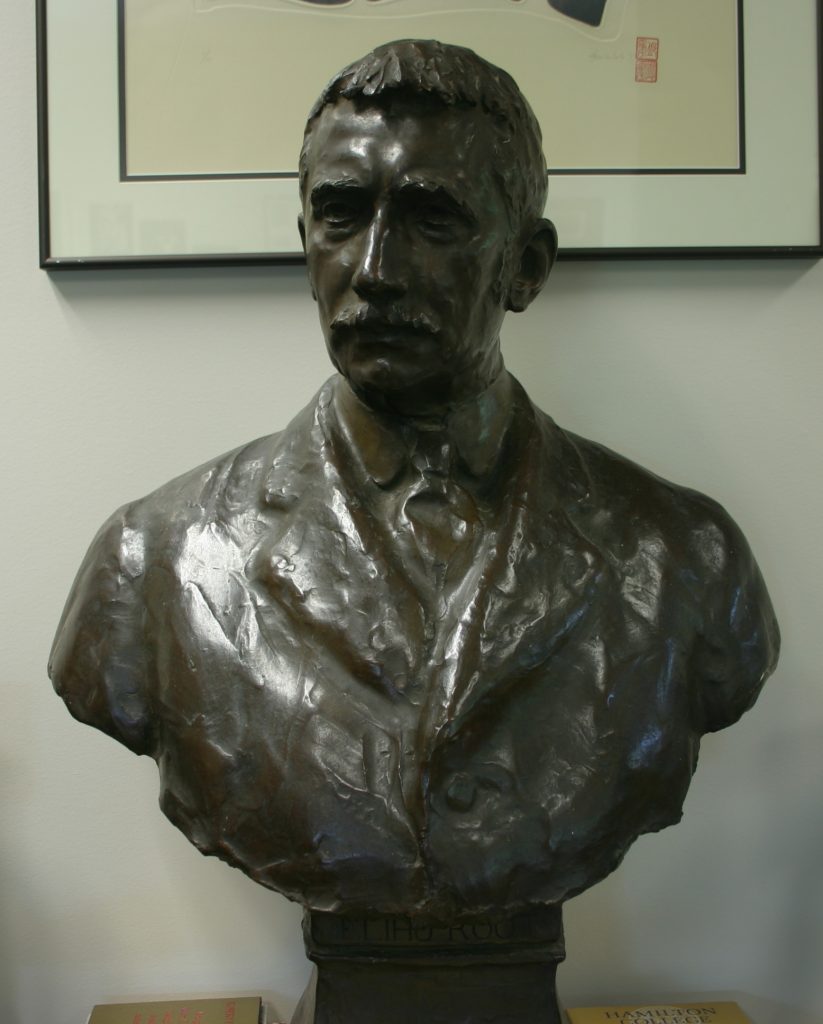
Subject: Elihu Root Sr.
Date of Birth: February 15, 1845
Date of Death: February 7, 1937
Artist: James Earle Fraser
Location: President’s House, President’s Office
Sitter: Elihu Root was born in Clinton, New York, on February 15, 1845 to Oren Root and Nancy Whitney Buttrick. His father was professor of mathematics at Hamilton College. After studying at local schools, including Williston Seminary, Elihu enrolled in college at Hamilton College, where he joined the Sigma Phi Society and was elected to the Phi Beta Kappa Society. Root continued his education at New York University School of Law. After his graduation in 1967, he became a successful lawyer and worked with clients including Andrew Carnegie.
In 1899, Root was appointed to President William McKinley’s Cabinet as Secretary of War. Despite his lack of military experience, McKinley had faith in Root because of his vast knowledge of legal principle. In this position, Root reformed the War Department and the Civil Service and effectively managed the United States’ new territories of Cuba, the Philippines, and Puerto Rico. After McKinley’s death, President Theodore Roosevelt kept Root in his position as Secretary of War for the remainder of his truncated first term and then appointed him Secretary of State in 1905.2 It was here that Root did perhaps his most important work in attempting to establish international law as the first form of recourse vis-à-vis international tensions. Root declined the Republication nomination for president, but remained active in politics and international relations, serving as a U.S. Senator from New York from 1909-1915. Root also served as a trustee of Hamilton College from 1883 until his death in 1937 and received the Nobel Prize for his work in international relations. On February 7, 1937, Root passed away in New York, New York.3
Artist: James Earle Fraser was born in Winona, Minnesota in 1876 and died in Westport, Connecticut in 1953. He was “defensive about making portraits” 2, feeling they should be included among the greatest of works. Much of his known work comments on The Trail of Tears and the damaging effects of Euro-American settlement on American Indian land.
The Portrait at Hamilton: When Root initially saw the portrait, he said, “If this feller took a check to the bank, I think they’d cash it without question.” 3 The bust is made of bronze and was gifted by an anonymous donor. It was once held in the Smithsonian American Art Museum. The portrait is located in the president’s office in Buttrick Hall.
1. “The Public Career of Elihu Root”, Hamilton College Alumni Review 3 (January 1938): 46.
2. Fraser, James Earle. “Elihu Root.” Smithsonian American Art Museum, accessed May 13, 2019. https://americanart.si.edu/artwork/elihu-root-8604.
3. Hamilton College Alumni Review 50 (1985): 28, 38.
